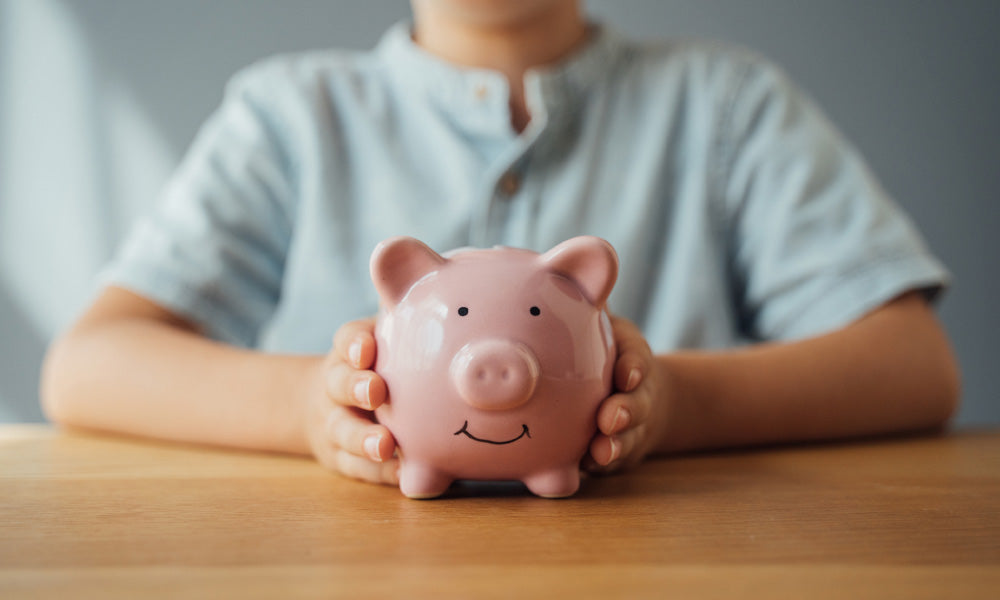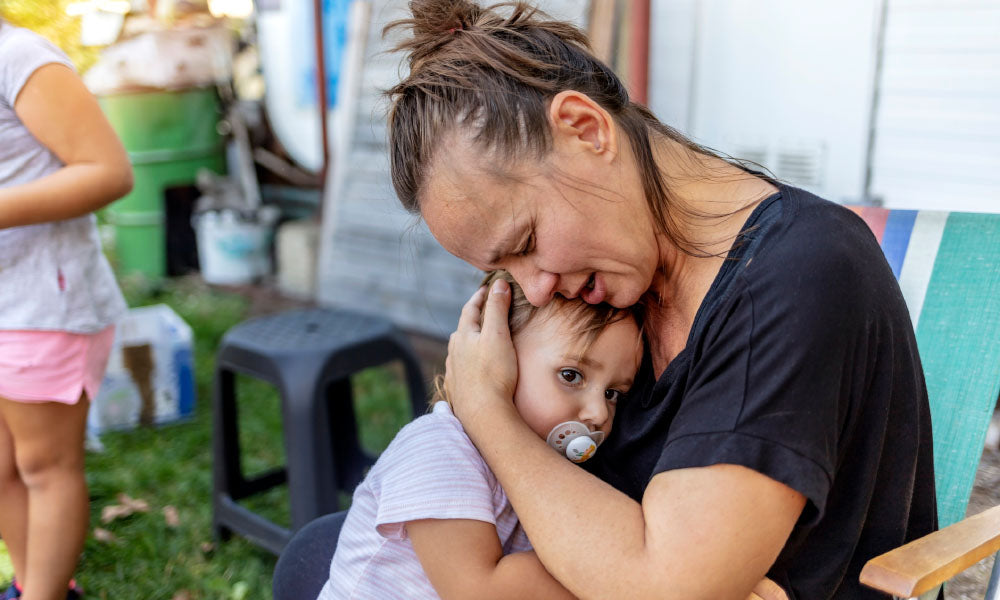You know what sucks? Being broke.
My husband and I learned some cold, hard lessons about life when we were first married and paid no attention to where our money was going. We lost over half of our income (and our house) when we were hit with an unexpected job layoff. We were not prepared.
It took us five long years to recover and pay off our debts, and we had to make big changes in our spending.
Those were emotionally trying times and now we want to do everything we can to keep our kids from knowing that kind of pain in the future. They're young still three and eight but we've already started teaching them about handling money responsibly.
You don't have to go out and buy an expensive kit to teach your kids about money, you can simply let them look over your shoulder to observe the things you do every day for the household.
Kids like to be included in what it takes to run a household, and it increases the chances of them being willing to contribute when asked. There's no better way to learn than jumping in on real-life, hands-on situations. These suggestions really helped our family:
1 | Let them see you doing the bills.
Invite them to sit down with you as you pay bills, and note the amounts in key areas: housing, vehicle payments, and groceries. Kids are also often surprised at what utilities cost, and that you have to pay for things like electricity.
The amount spent in these areas directly impacts the budget, and determines what is left for fun money, activities or entertainment afterward, and it's great for them to see that.
2 | Give them responsibilities at home.
They may groan at having a chore list, but stress their value in the home and the pride of contributing to the household. Toddlers especially like to feel important by helping to fold simple things like washcloths or bringing clothes baskets to the laundry room.
Pay them for the tasks they complete on a chart and let them see their money build up in a jar. Pay can vary depending on age and task, but a good rule of thumb is 50 cents or a dollar per chore.
3 | Let them spend their earnings.
There are a lot of great teachable moments at the store about the cost of different toys and staying within their means.
If they have 10 dollars to spend and a toy they want costs $9.99, you can have them choose something else that costs less, or leave the store and come back after they have earned the rest. It can be hard in the moment not to just spot them the tax, but having them wait or choose an alternative teaches them valuable lessons about patience and spending only as much as they have to spend.
4 | Let them help shop for groceries.
Write out a shopping list and ask them to help you compare prices and brands to stay within a target amount. It's easier to do this when you have a short list, or just need to pick up a few things.
It's a great learning experience for them to see how much individual groceries cost, and to compare prices for different versions of the same type of product. I keep a running estimate on the list as I go for what the total will be at the checkout.
It's also great for them to see the cost when it comes to extras like cookies and soda. Let them study the receipt and talk about how every item might not cost a lot on its own, but it all adds up in the end.
5 | Let them help make dinner.
After seeing how much groceries cost, talk about consumption. The rate at which groceries are consumed and used in recipes directly affects the grocery budget and how often you will need to go back to the store. You can also discuss the expense of eating at a restaurant versus cooking at home.
These are great learning tools for kids that don't take a lot of time in the long run, and can help set your kids up for success. You can't predict the future, but you can teach your children to adapt to whatever their circumstances are at any given time.
It gives them a very realistic view of how things work when it comes to running a household and staying within a budget. It's also a great way to spend quality time with your kids while teaching them real world values they won't learn in school.



